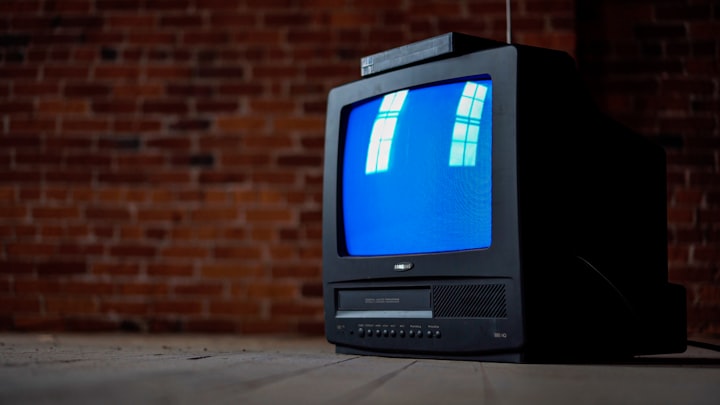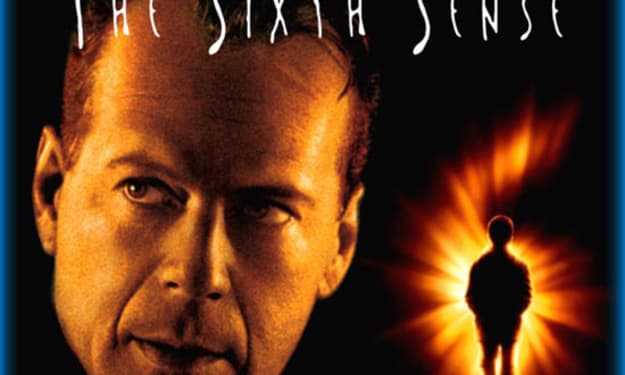Ace Erasure on the Screen
Beyond a lack of characters... Part 1 of 3 of a series discussing the role of asexual characters on TV and Film, as well as their impact on the asexual community.

Asexual characters and those on the ace spectrum are a rare find in TV and film. I can count all of them with my fingers, half of them almost irrelevant to the plot, and a few show a very negative on asexuality. However, the negative impact on the ace community through media goes beyond bad representation, a lack of characters with said identities, or the elimination of this identity for adaptation purposes. *cough* Jughead *cough*. If you’re wondering how, let’s take a look at the regular approach for relationships on screen.
Whenever a couple, is meant to be falling apart what is the first phrase you hear? How about “we haven’t had sex in (insert any amount of time)”? Or maybe even “the last time we had sex was when (insert event from long time ago)”? Even the last movie I watched before starting this piece, used this exact method with its secondary character to indicate the distance in the marriage. And how do you fix the relationship problems? By having sex.
Now consider also, what is the turning point for a fictional couple to be considered as having a “real” relationship? That’s right. Once again it is having slept together. Anything before that is brushed away as irrelevant because it’s just the flirting stage or it is taking things too slow. A “healthy” and “legitimate” adult relationship is measured by their sexual activity. The only time the lack thereof is, somewhat, excused is when the characters are saving themselves for marriage or vow to be celibate but even then, there exists the presumption that sexual activity or attraction DOES occur but it is actively repressed.
Asexuality refers to people who experience little to no sexual attraction. It has no effect on whether people participate in and enjoy sexual activity or not. This varies from person to person. Despite this, it is important to establish that a big percentage of asexual people do in fact, rarely engage in sexual activity, even those with stable partners. While plot lines that show partners growing apart because of a lack of sexual intimacy are not taking a direct stance on asexuality, and they are a real lived experience for many people, resorting to the breakdown of the relationship as the only obvious outcome sets a clear standard. Therefore, it normalizes the idea in many people that if the sex isn't working, neither is the relationship.
Ideas like this are what makes people's reaction to asexuality feel extremely ostracizing. Asexual people end up receiving what could be interpreted as a threat just for revealing their orientation: if they don't participate in sexual activity with their partner, they will be either cheated on or dumped. It sets a dangerous precedent, not just for ace-identifying people, but also for anyone else, that partners are owed sexual intimacy to be faithful or to stay together.
Shifting over to teen shows, it would be expected that they have a better take on asexuality considering they have generally done a better job of including diverse characters, despite still falling into stereotypes. Unfortunately, that has not been the case. I previously mentioned the case of Jughead from Riverdale. Jughead in the Archie Comics was explicitly made asexual and aromantic, a perfect opportunity to include some representation, and a fact that the showrunner of Riverdale, Roberto Aguirre-Sacasa acknowledged and proceeded to overlook, eliminating it completely from the show.
His interview with MTV News has often been quoted with a hint of hopefulness in which he said:
“The way we're treating Riverdale, especially season one, is it's an origin story, so I think all of the kids are discovering themselves, and a big part of that is discovering their sexuality, their sexual selves.”
Overall a great point, especially since many ace and ace-spec people start identifying as such until later on in life, but we’re now five seasons in and there’s still nothing indicating a shift in Jughead’s identity.
Teen dramas in general have also fallen short of expectations for the asexual community. Not only are there no characters, but the perspective of teenage sexuality is pretty standardized. Everyone is either having sex or thinking about sex. Those that have not engaged in sexual activity or have an interest in it are categorized as inexperienced, unappealing, or there is something intrinsically wrong with them that must be fixed, such as past trauma or a pathological condition.
The shift in TV and film towards and acceptance of sexual content pioneered a revolution of the themes and stories that could be pursued without being deemed shameful or inappropriate, but left in its wake an entire section of the population that gets a constant message that they are not part of the sexual normativity. According to Dr. Foster in her work, Measuring Social Invisibility and Erasure: Development of the Asexual Microaggressions Scale, she states:
“Sexual normativity creates an environment in which the very existence of asexuality or asexual people is undermined and invalidated. This oppressive mechanism erases the possibility of asexuality as a viable asexual orientation and renders it invisible based on common social scripts.”
Interest in sexual topics for teens used to be taboo, but did not make their sexual activity any less real. It is positive that the topic is now being addressed, but it has now shifted to an opposite extreme. So much so, that anyone who does not experience sexual attraction is now weird and made to look as if there is something wrong with them. One of the most commonly heard phrases amongst asexual identifying people is that before discovering asexuality they thought they were broken. Movies and series that take this extreme only perpetuate these feelings on brokenness on many teens that are slowly coming to terms with their different identities.
It is one thing to not have enough asexual characters that show positive representation, but it is even worse that the entire possibility of asexuality is constantly wiped out of existence, whether consciously or not. To add onto the problem, past negative representations continue to haunt the community, even playing into harmful ideas that lead to medical discrimination.
One of the very first representations of asexuality in media was through Dr. House, a witty and profound medical show that would bring many issues to light... which sent the message that asexuality doesn’t exist or that it can be cured. It pushed an entire identity into the realm of pathologies. Find any familiarity with commonly held beliefs about the homosexual and transgender experiences? Most of the medical takes on sexual orientation and gender identity are mainly a thing of the past, but they continue to haunt the present.
Asexuality often gets misunderstood or even misdiagnosed by medical professionals as a sexual dysfunction or an effect of past trauma. It can indeed arise from these situations, but it is not intrinsically linked. However, until as recently as 2013, asexuality was often diagnosed as hypoactive sexual desire disorder until The Diagnostic and Statistical Manual of Mental Disorders, Fifth Edition included an exception for those who identify as asexual. Even so, many asexual people continue to be subjected to medical testing and psychological treatment for being asexual. Having a renowned and well-loved medical show describe asexuality as a result of a medical condition and a personal choice continues to have a negative impact, even if the episode came out ten years ago.
Asexual representation is still quite rare and, while the community would love to see more of them on screen, the very least creators can aim to do is to not invalidate its existence through the dialogue and premises. This can be as easy as accepting the possibility that a character is not interested in sex without jumping to conclusions about how there must be something wrong with them.
I'm hopeful in believing that most of these dialogues that fall into a sexual normativity do not actively intend to erase an entire section of the world's population. However, they do and, by setting a "normal", they are making anyone who does not fit in identify themselves as "abnormal" which no one should be made to feel as.
If you are a creator, next time you work on a piece go over it once more while analyzing if what you’ve written falls under the idea of sexual normativity. You might discover it is more present than you think, and fixing it can keep an ace identifying person from having to go through the emotional burden of being told their experiences are not “normal”.
***********************
Sources:
Bell, Crystal. “Cole Sprouse's Jughead Is Still Figuring out His Sexuality, Riverdale Producer Reveals.” MTV News, 18 Jan. 2017, http://www.mtv.com/news/2973350/cole-sprouse-jughead-asexual-riverdale-producer/.
Foster, Aasha Brianna. Measuring social invisibility and erasure: Development of the Asexual Microaggressions Scale. Columbia University, 2017.
Murray, F. “Asexuality Was Considered a Disorder?!” Ace Week, Asexual Outreach, 29 Oct. 2020, https://aceweek.org/stories/asexuality-in-the-dsm.
**********************
Part 2 and 3 coming soon. Be sure to follow to be notified as soon as they are published.
About the Creator
Angie Loveday
An asexual Costa Rican filmmaker and writer fumbling her way through words, hoping to make some sense to the netizens. You can follow me online @ang_lovestheday






Comments
There are no comments for this story
Be the first to respond and start the conversation.